Smarter kpis drive smarter decisions - part 2
Specifiability & TestabilitySpecifiability
Testability
Smart KPIs
Risk Management
Decisions
The vast majority of organizations still make such decisions based on SWAG 1 rather than documented metrics that matter. XQual brings a set of automated and real time KPIs 2 to help in this.
This paper explains how this works using XQual's specifiability (weighted specification coverage) and testability (weighted test coverage).
All this builds on the scope notion addressed in the first paper of this series (part 1) and describes the major advantages that this brings. Please ensure reading this paper first.
The third paper of this series (part 3) will expand the notion of scope, specifiability and testability to the quality aspects.
Summary
Introduction
In this paper, we address and extend this notion to cover the Specifiability and Testability KPIs.
Specifiability
XQual does not impose to manage specifications. Although this is quite useful for many
projects, including those that are defined as "Agile".
When you get a User Story, you often need to define some aspects of the story: GUI
wireframing, basic workflows, data in and out, computation or decision rules...
You capture those using a large array of tools, from simple pen and paper to advanced modeling tools.
Many organizations still use full textual natural language documents.
Whatever your context and practices are, you may benefit from managing those as part of
your ALM and managing the traceability from Requirements to Specifications and Tests to
tests results.
Testability
This same issue exists when calculating the SUT's test coverage. As for the requirements coverage, XQual handles this using:- specification's priority
- specification's status
- test's priority
- test's executability
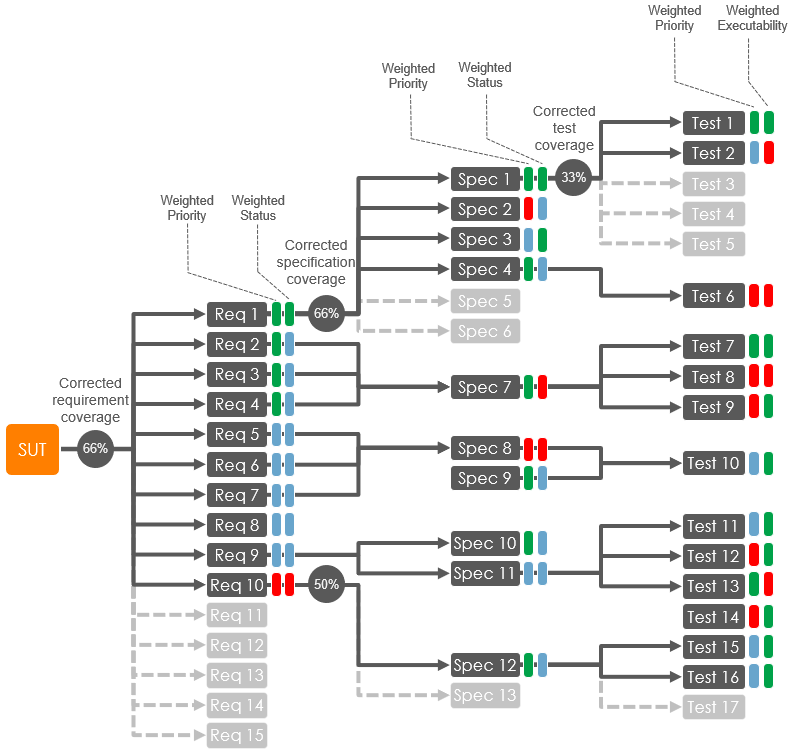
Describing the full detailed algorithm is beyond the scope of this paper but you get a basic idea in the previous paper.
The important information here is that for each SUT and SUT Folder you get 3 KPIs:
- Weighted Requirement Coverage (also named Scope)
- Weighted Specification Coverage (also named Specifiability)
- Weighted Test Coverage (also named Testability)
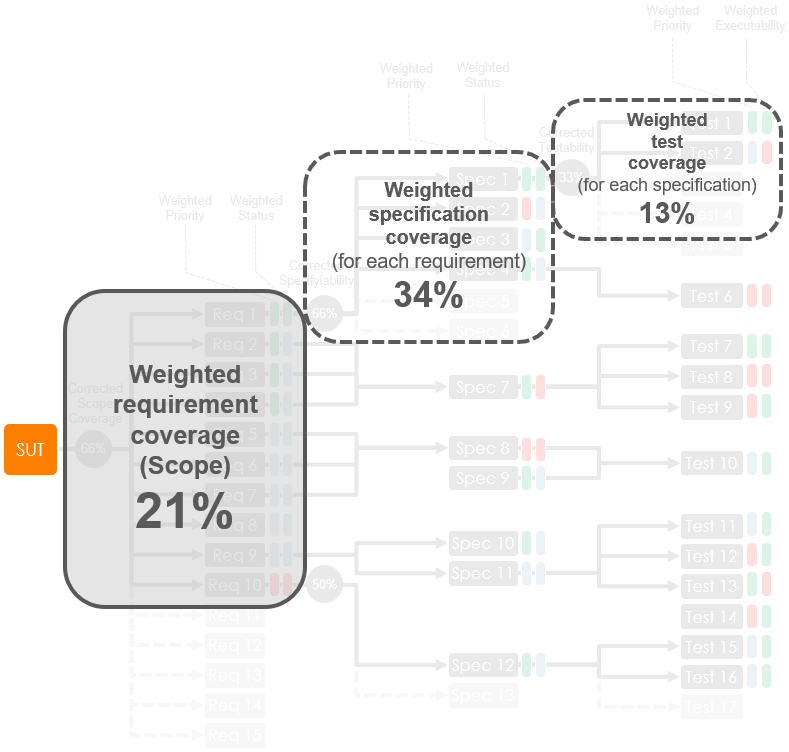
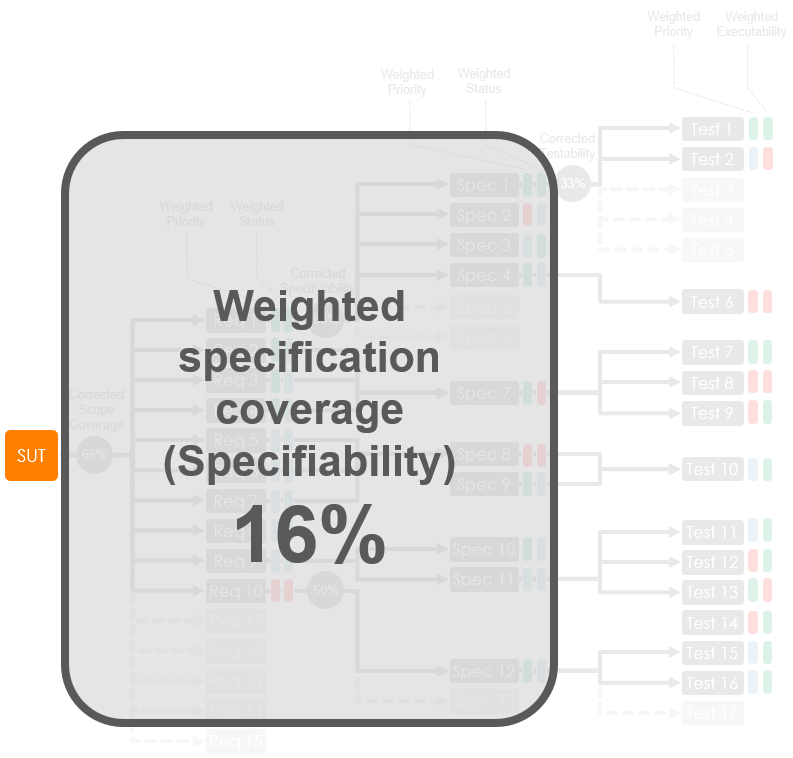
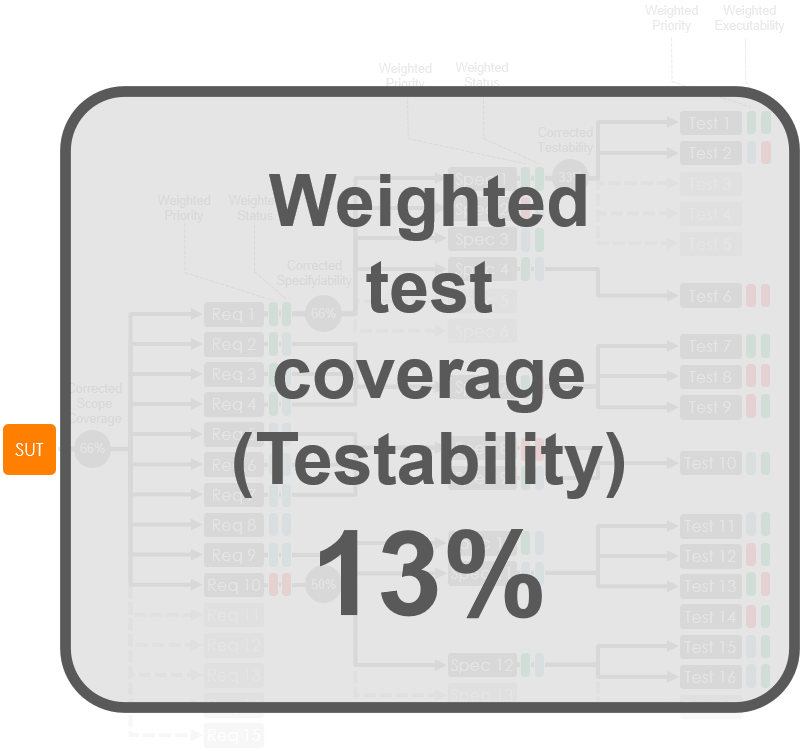
Using those three KPIs together, you can get a much better view of the projects progress status. As explained in the previous paper, being able to know where your coverage levels stand at any time during the project allows taking smarter decision. For example, here, if you are in a context where each functionality, each component must be tested, the following diagram (Figure 2) would alert you very rapidly... you are not quite there yet!
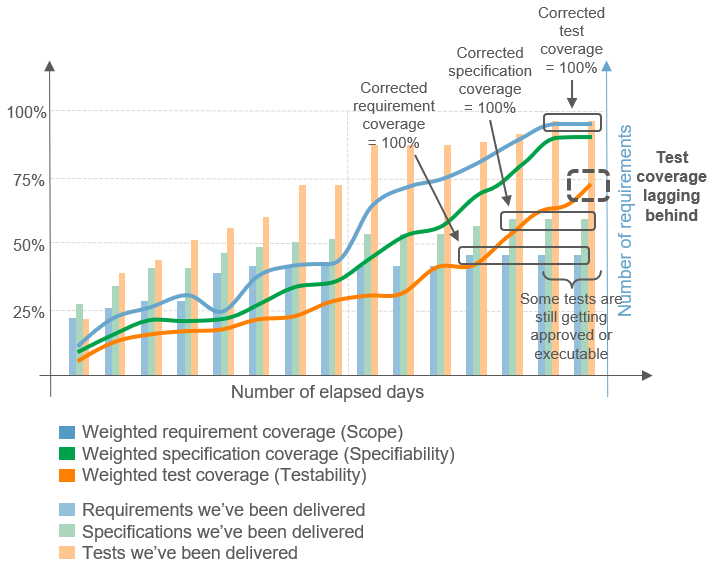
Therefore, in such case, you clearly must decide either to reduce the scope or to lengthen the project duration.
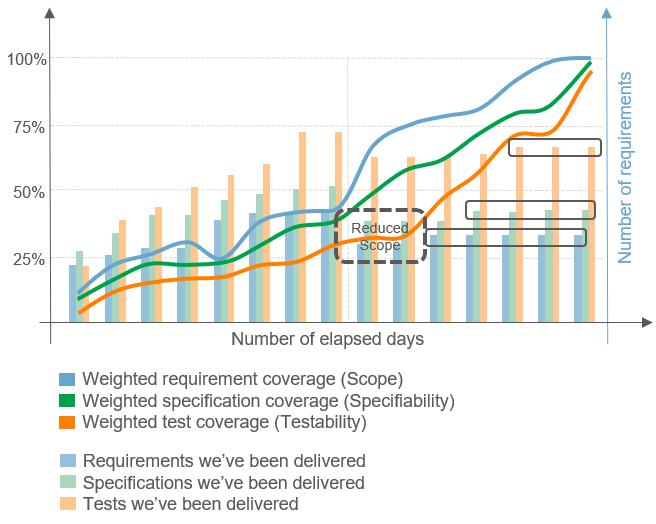
- SCOPE
- SPECIFIABILITY
- TESTABILITY
AT ANY TIME, YOU CAN ANALYZE THE TRUE STATUS OF YOUR PROJECT AND MAKE SMART DECISIONS. AT THE END OF ANY CYCLE (SPRINT, RELEASE, PROJECT), YOU HAVE THE TOOLS TO DECIDE WHETHER YOU WANT TO PUSH THIS TO PRODUCTION OR SHIPPING IT TO YOUR CUSTOMERS.
THOSE KPI ARE CALCULATED REAL-TIME AND THE BASIC PARAMETERS ARE ALL CONFIGURABLE, MAKING IT EASY TO ADAPT TO ANY ORGANIZATION. WE'LL SEE IN THE NEXT WHITE-PAPER HOW WE CAN BENEFIT FROM THOSE METRICS TO GENERATE A NEW ONE: THE QUALITY SCORE.
1 SWAG: https://en.wikipedia.org/wiki/Scientific_wild-ass_guess
2 KPI: https://en.wikipedia.org/wiki/KPI
Figure 1: Cross coverage from requirement by specification
Figure 2: Test coverage progress
Figure 3: Reduced_scope

